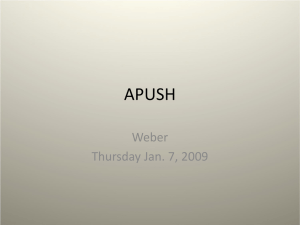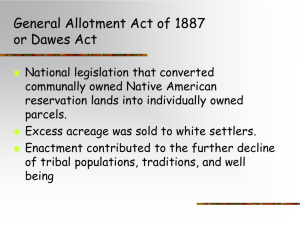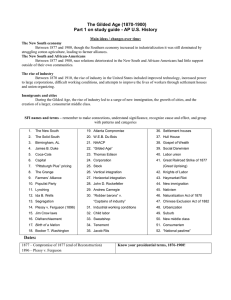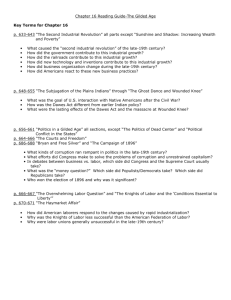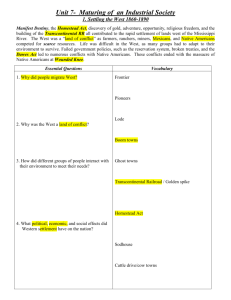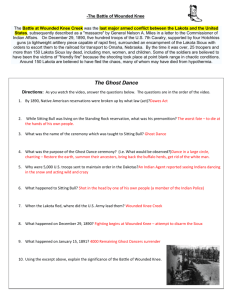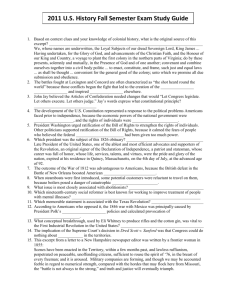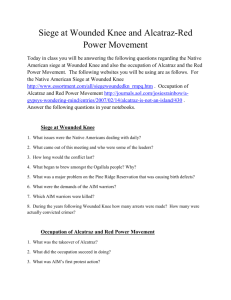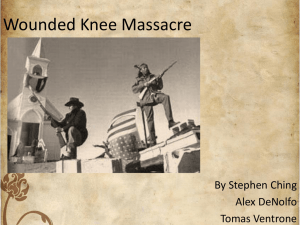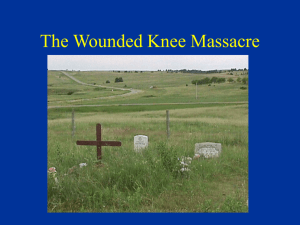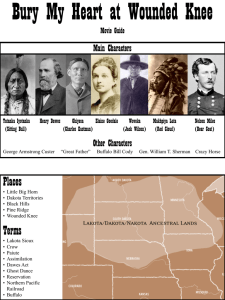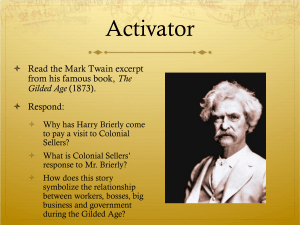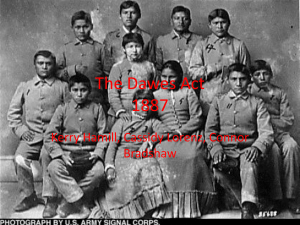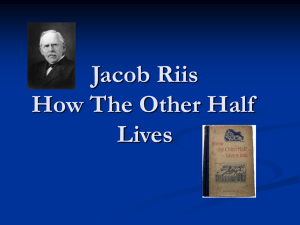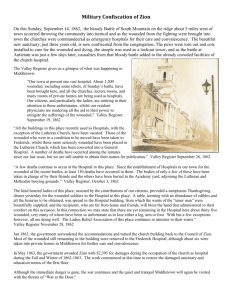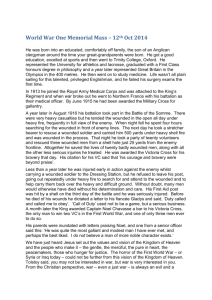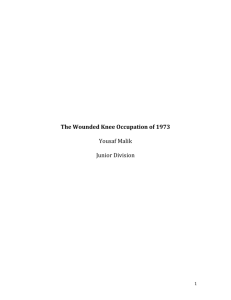35_ Postbellum Expansion West
advertisement
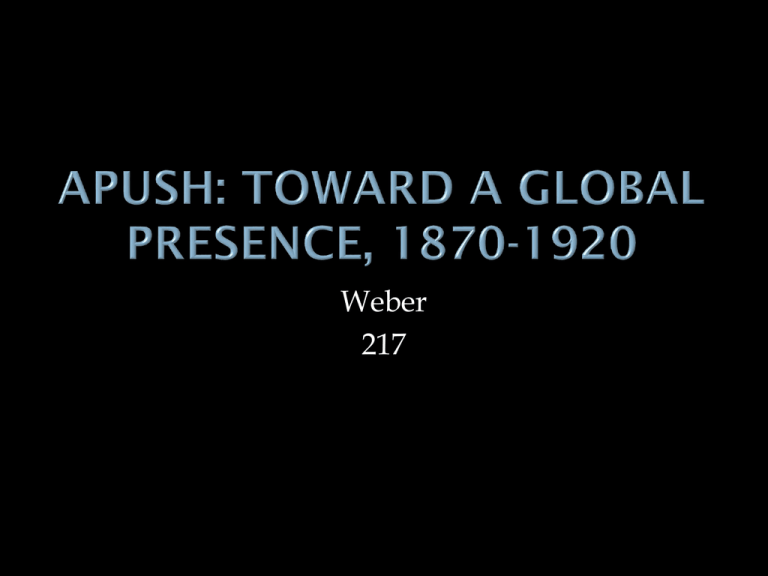
Weber 217 1. How well prepared were you for the exam? 2. About how many hours would you say you studied? 3. How do you think you did on each part and overall? 4. What goals do you have for improving your performance? 5. Now that you have studied US History from pre-Columbian times to Reconstruction, how would you define the meaning of freedom? Has it changed since the definition you wrote at the start of the course? If so, in what ways? Activator, agenda, and objective (10 minutes) Test review and corrections (30-45 minutes) Unit 4: Expansionism in America’s Gilded Age Consequences for Native Americans Wounded Knee video clip Reflection Textbook Theatre for Thursday Exit ticket and homework All of you will… Reflect on your progress so far and review material from c. 1400-1877. Understand what Unit 4 will be about. Frame questions to study throughout Unit 4. Tackle AP Topic #15 and Ch.16. Each question is marked with a letter and a star (*). The letter is your answer and the * is the correct answer. Go through all the questions and in the space where it says “Standard/Cluster” write the unit, time period, or theme the question is connected to. For each question you got wrong: In the space to the right or on a separate sheet, write the correct answer and a way to remember it. Read Foner, pp.585-587. Based on that introduction make a K-W-L chart Know Want to Know Learned - This unit will be about economic growth. - Labor unions organized to fight for rights and traditional freedoms -Native Americans continued to be marginalized and exploited. - - Who did not benefit from the growth of industry? - What happened to Native Americans? - How did people organize to fight for their rights against big business? - How do the events of the period relate to the present? [To be completed at the end of the unit, or as you go along]… AP Topic #15. Industrial America in the Late Nineteenth Century Corporate consolidation of industry Effects of technological development on the worker and workplace Labor and unions National politics and influence of corporate power Migration and immigration: the changing face of the nation Proponents and opponents of the new order, e.g., Social Darwinism and Social Gospel 1. What was the importance of the railroad to the successful development of America’s Second Industrial Revolution? 2. Explain what was required for Indians to attain citizenship and evaluate the advantages and disadvantages of citizenship to the Indian. 3. Analyze how the shift from an agricultural society to an urban society changed the American social order? 4. Compare William Sumner’s words in What Social Classes Owe to Each Other to that of the Federated Trades of the Pacific Coast’s “rewrite” of the Declaration of Independence. What two positions are laid out? 5. In what ways did Americans respond to the overwhelming labor questions that arose after the Great Railroad Strike of 1877? Farming on the middle border More land came into cultivation in the 30 years after the Civil War than in the previous 250 years of American History. Farming was difficult and much of the burden fell on women. Bonanza farms: John Wesley Powell warned that much of the region’s arid land required large scale irrigation projects and cooperative, communal farming. Small farmers became more connected to national and international markets. As crop production increased prices fell and small farmers suffered The future of western farming was pushed toward giant agricultural enterprises, seen in CA. Cowboys became a symbol of a life of freedom on the open range. The incorporation of the West into the national economy meant doom for the Plains Indians. As settlers encroached on their land, bloody conflicts between the army and the Native Americans began in the 1850s and continued until 1890s. The Union army launched a campaign against the Navajos in the Southwest. Once numbering 30 million in 1800 the buffalo were already extinct due to hunting by 1890. The Nez Perce were chased over 1,700 miles before surrendering in 1877. Chief Joseph spoke of freedom before a distinguished audience in 1879. Defending their land, Sioux and Chyenne warriors attacked General Custer at Little Bighorn. These events, however, only delayed the onward march of white soldiers, settlers, and prospectors. In 1877 Congress eliminated a treaty system that dated back to the revolutionary era. Forced assimilation, trying to make Native Americans “act white” like so-called “civilized” Europeans. The crucial step in attacking “tribalism” came in 1887 when the Dawes Act was passed. The policy was a disaster for the Indians. Many laws only offered citizenship to Native Americans if they gave up tribal affiliations and assimilated, but the vast majority did not want to give up their identity and culture. Elk v. Wilkins (1884) made it so that the 14th and 15th did not apply to Native Americans. Some Native Americans sought solace in the Ghost Dance, a religious revitalization campaign reminiscent of the pan-Indian movements led by earlier prophets like Tenskwatawa. On Dec. 29, 1890, soldiers opened fire on ghost dancers encamped on Wounded Knee Creek in South Dakota, killing 200 Native Americans, mostly women and children. The Transformation of the West, pp.601-615 Landmarks in Indian Relations, 1876-1890 Event Date Battle of Little Bighorn 1876 Chief Joseph’s trek toward freedom 1877 Dawes Act 1887 Battle at Wounded Knee 1890 Outcome Write an open response reflection about westward expansion after the Civil War and the consequences for Native Americans Try to incorporate as many specifics as possible (Dawes Act, Wounded Knee, etc). In groups of 5 write a short skit that portrays the main events and key ideas in the sections below: 1. The Second Industrial Revolution (pp.590-601) 3. Politics in the Gilded Age (pp.615-620) 4. Freedom in the Gilded Age (pp.620-624) 5. Labor and the Republic (pp.624-631)
